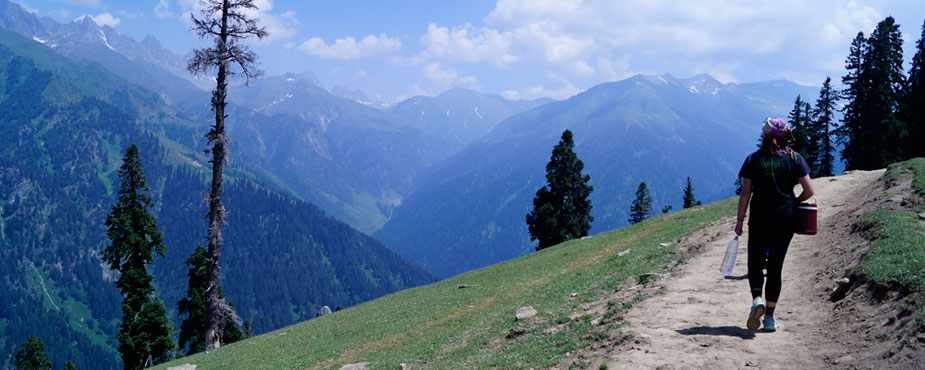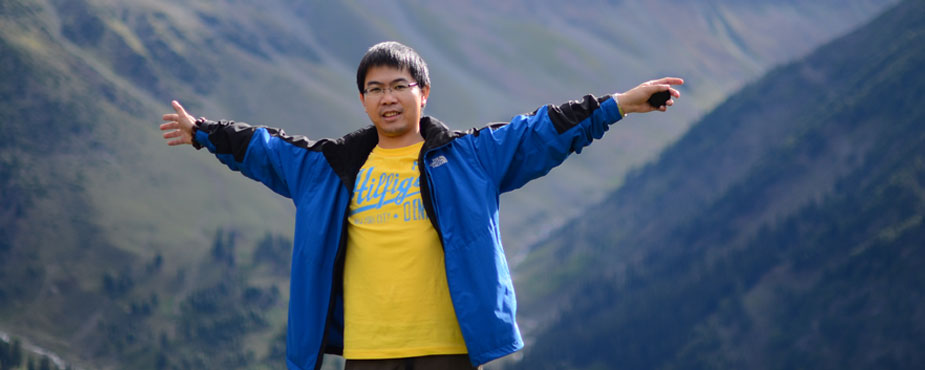Kashmir Great Lakes Trek – Fitness Guide



Fitness Guide
If we ask people about what they think of trekking, the most basic perception we get from them is – walking. They say that trekking is like walking. Walking is something most people do every day and do not find it that difficult. However, trekking is one difficult task. If it would have been that easier like every day walk, everyone would have been a great trekker. But unfortunately, it isn’t. There is no chance of doubt about the fact that Kashmir is a beauty beyond words. But don’t dare to commit the mistake of taking this beauty lightly. Just like the two sides of a coin, if one part showcases the beauty of Kashmir, the other can be as dangerous.
Get to know Great Himalayas of Kashmir
Kashmir Great Lakes is a moderate to difficult trek. It can be as difficult as the Roopkund or Rupin Pass trek. You tend to cover an average of 10 km each day. In 4 days you may gain an altitude of 8,550 feet. You can’t expect Kashmir lying in the lap of ‘The Great Himalayas’ to be so easy and good to you. On watching the pleasing and beautiful views of Kashmir in pictures, people often create an idea in their head about Kashmir not being very troublesome and end up reaching unprepared. And as Kashmir lakes trek isn’t that easy, this lack of preparation leads to the entire trip getting ruin. Therefore it is necessary to prepare yourself and get fit before starting the trek. We strongly urge you to train yourself for trek and achieve optimum fitness.The old saying “Health is Wealth” holds perfect for Trekking. Only if you’ll be healthy, you’ll be able to enjoy and focus on the scenery, culture, nature and know about your fellow trekkers.
Reasons for being physically fit
You need to build a strong foundation of fitness for the mountains three months prior to the trek. This will lead to acclimatization of your body as per the upcoming conditions that you’ll be facing during trek. Focus on your regime and train yourself with complete dedication during these months so that you don’t face any problem while on trek. However, the main reasons to get fit before beginning the trek are as follows:
- As you reach higher altitudes with every moving step during a trek, the air becomes thinner. As the air becomes thinner, the oxygen level also decreases. To cope up with the decreasing level of oxygen you need to build aerobic fitness.
- Walking for a long duration on a steep slope with a backpack/day-pack is something not very usual. This requires a moderate level of strength and endurance training.
- Carrying a backpack/day-pack, however light, can become a strain after a while. It can make you extremelytiring ultimately putting a full stop on your journey. A fitness regime will help you to be in good shape before the trek and make you capable enough of carrying weight.
- Most people don’t realize that walking downhill actually is more fatiguing and destructive to the body. There are two reasons behind it. First, there is more force applied on the body as you go downhill, especially with weight on back. Second, the already stressed muscles caused by walking uphill, elongate as you descend. Therefore, it is necessary to maintain a good fitness level before initiating a trek.
The Fitness Regime
If you wish for a successful Kashmir trek and enjoy all its glorious views, there is a strong need to prepare you well and get fit.
The first step – Calculate you BMI
Calculate your BMI before you take on the fitness regime. If your BMI comes out to be normal, you can plan your fitness regime as discussed further. If you’re suffering from any chronic or acute illness, you need to consult a medical practitioner. If your BMI doesn’t comes out to be normal, consult your trusted doctor before you get on with your fitness regime.
Cardiovascular endurance – Plan for 10 km in 60 minutes before beginning the trek
The Kashmir Great Lakes trek is definitely not an easy one. It requires the good level of endurance and stamina in your body. Youcan start by jogging everyday as the first step towards achieving fitness. Start slow and then slowlyincrease your pace every day. Swimming, cycling and stair climbing without multiple pauses in between can prove to be helpful.
To prepare your body for a high-altitude trek, you should plan acombination of distance and speed targets. And if you are newly introduced to a regular fitness routine, you can phase out your targets in the following manner -
- Target completing 5 km in 35 minutes when you start.
- Moderately bring up your speed up to 5 km in 30 minutes.
- Start increasing the distance you jog in order to get to 10 km in 70 minutes.
Strength – Do 3 sets of squats with 15 in each set
The descent from Gangabal to Naranag can be extremely tiring, resulting in a stress on your knees. So you need to make efforts on your core body strength and your thighs, to take pressure off your knees. You can do some squats as well. Begin with 3 sets of squats, with 8 squats in each set and gradually increase it to reach towards the target in 3 weeks. You can also make planks and crunches a part of your fitness regime. This will help in increasing the key strength of your body.
Flexibility
Talking about work on muscles, you need to keep them loose and flexible. To achieve this flexibility, you need to perform some stretching exercises – stretch your hamstrings, quadriceps, hip flexors, lower back muscles and shoulders regularly. As carrying a backpack/day-pack after a while can become strain making you extremelytiring, these exercises will help you to be in a good shape before the trek and will make you capable enough of carrying weight.
